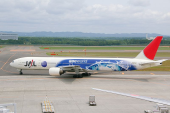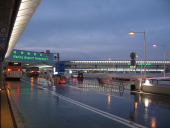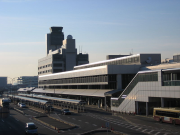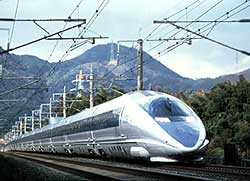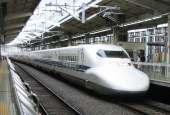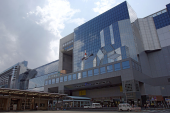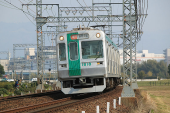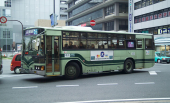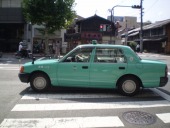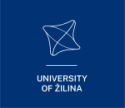
|

|
Conference Location
History
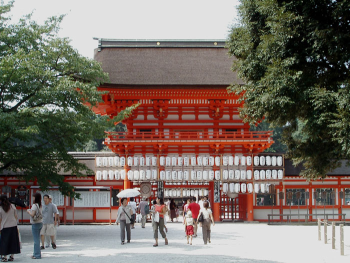
|
Although archaeological evidence places the first human settlement on the islands of Japan to approximately 10,000 BC, relatively little is known about human activity in the area before the 6th century AD, around which time the Shimogamo Shrine is believed to have been established. During the 8th century, when the powerful Buddhist clergy became involved in the affairs of the Imperial government, the Emperor chose to relocate the capital to a region far from the Buddhist influence. Emperor Kammu selected the village of Uda, at the time in the Kadono district of Yamashiro Province, for this honor. |
|
The new city, Heian-kyō (平安京, "tranquility and peace capital"), a scaled replica of the then Tang capital Chang'an, became the seat of Japan's imperial court in 794, beginning the Heian period of Japanese history. Although military rulers established their governments either in Kyoto (Muromachi shogunate) or in other cities such as Kamakura (Kamakura shogunate) and Edo (Tokugawa shogunate), Kyoto remained Japan's capital until the transfer of the imperial court to Tokyo in 1869 at the time of the Imperial Restoration. |
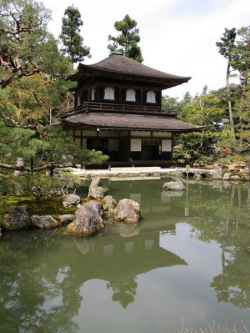 |
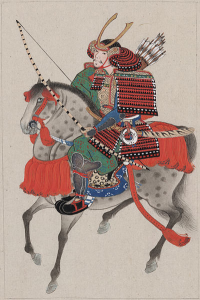
|
The city suffered extensive destruction in the Ōnin War of 1467-1477, and did not really recover until the mid-16th century. Battles between samurai factions spilled into the streets, and came to involve the court nobility (kuge) and religious factions as well. Nobles' mansions were transformed into fortresses, deep trenches dug throughout the city for defense and as firebreaks, and numerous buildings burned. The city has not seen such widespread destruction since. |
|
In late 16th century, Toyotomi Hideyoshi restructured the city by building new streets to double the number of north-south streets in central Kyoto, creating rectangle blocks superseding ancient square blocks. Hideyoshi also built earthwork walls called Odoi (御土居) circulating the city. Teramachi Street in central Kyoto is a Buddhist temple quarter where Hideyoshi gathered temples in the city. Throughout the Edo period, the economy of the city flourished as one of three major cities in Japan, the others being Osaka and Edo. |
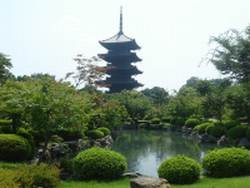
|
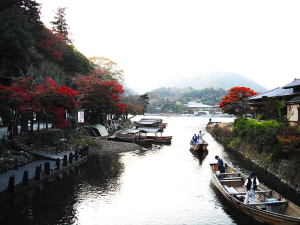
|
The Hamaguri rebellion of 1864 burnt down 28,000 houses in the city, and the subsequent move of the Emperor to Tokyo in 1869 weakened the economy. The modern city of Kyoto was formed on April 1, 1889. The construction of Lake Biwa Canal in 1890 is one measure taken to revive the city. The population of the city exceeded one million in 1932. |
|
There was some consideration by the United States of targeting Kyoto with an atomic bomb at the end of World War II because, as an intellectual center of Japan, it had a population "better able to appreciate the significance of the weapon. In the end, at the insistence of Henry L. Stimson, Secretary of War in the Roosevelt and Truman administrations, the city was removed from the list of targets and replaced by Nagasaki. The city was largely spared from conventional bombing as well, although small-scale air raids did result in casualties. |
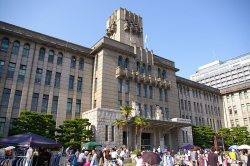
|
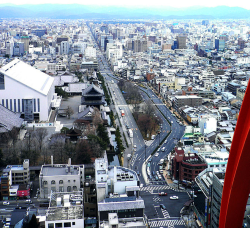
|
As a result, Kyoto is one of the few Japanese cities that still has an abundance of prewar buildings, such as the traditional townhouses known as machiya. However, modernization is continually breaking down the traditional Kyoto in favor of newer architecture, such as the Kyoto Station complex. |
|
Kyoto became a city designated by government ordinance on September 1, 1956. In 1997, Kyoto hosted the conference that resulted in the protocol on greenhouse gas emissions that bears the city's name. |
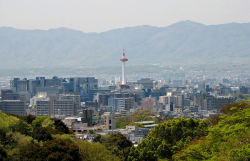
|
Parts of this text were copied from 
Conference Venue
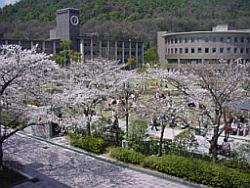
|
The ASTEC'2012 conference will be held at: You can find a link here to several campus location maps |
 How to reach Kyoto and the conference venue
How to reach Kyoto and the conference venue
By Plane |
When arriving in Japan by plane you can either land at Narita Airport in Tokyo (Terminal 1 or 2) and make your way by JR Shinkansen (Bullet Train) to Kyoto. (see below) Or you can land at the Osaka Kansai International Airport and make your way by by JR Limited Express “Haruka” train to Kyoto. (see below) Lastly you can also arrive by plane at Nagoya Airport and make your way by JR Shinkansen (Bullet Train) to Kyoto. (see below) |
By Train |
From Tokyo Station take the JR Tokaido Shinkansen Line for 2 hours and 15 minutes to arrive at Kyoto Train Station. Information on schedules and fares can be found here and an overview of the main train lines from Narita airport here. From Kansai International Airport Station take the JR Limited Express “Haruka” train for 1 hr. 15 min. to arrive at Kyoto Train Station. From Nagoya station take the JR Shinkansen (Bullet Train) for 40 min. to arrive at Kyoto Train Station.
Kyoto station is located at: Shimogyō, 8-3, Higashi-Shiokōji Takakura-chō, 600-8214. Once you arrive in Kyoto, there are several ways to reach the Ritsumeikan Kinugasa campus as shown on the linked map. |
By Subway |
Bu local train transport combined with taxi it will take you 19 minutes to reach the Campus. You need to change from train to taxi at Emmachi Station as you can see from enclosed map and travel instructions. (450 kb) |
By Bus |
By bus it will take you one hour from the Train station to reach the Campus, as you can see from enclosed map and travel instructions. (450 kb) |
By Taxi |
By taxi it will take you 40 minutes from the Train station to reach the Campus, as you can see from enclosed map and travel instructions. (450 kb) |
By Car |
You can also reach the Campus by car, just follow the instructions linked above. |
BEWARE

When you bring your PC or other equipment to Kyoto be aware that different plugs are needed. (see an overview of world plugs here)
- That your VISA requirements are OK. See the Fees Page for more information.
Kyoto Maps
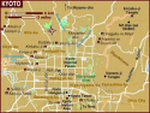
|
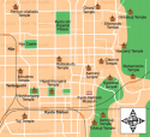 |
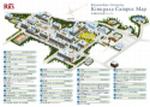
|
Click on the above maps for an expanded view
Useful links (more to follow)
Check back for further updates here: 

.svg.png) Kyoto (京都市) is a city in the central part of the island of Honshū, Japan. It has a population close to 1.5 million. Formerly the imperial capital of Japan, it is now the capital of Kyoto Prefecture, as well as a major part of the Osaka-Kobe-Kyoto metropolitan area.
Kyoto (京都市) is a city in the central part of the island of Honshū, Japan. It has a population close to 1.5 million. Formerly the imperial capital of Japan, it is now the capital of Kyoto Prefecture, as well as a major part of the Osaka-Kobe-Kyoto metropolitan area.
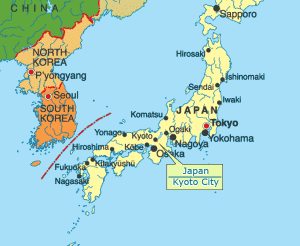

 Tel: +81-75-466-3431
Tel: +81-75-466-3431 Email:
Email: 